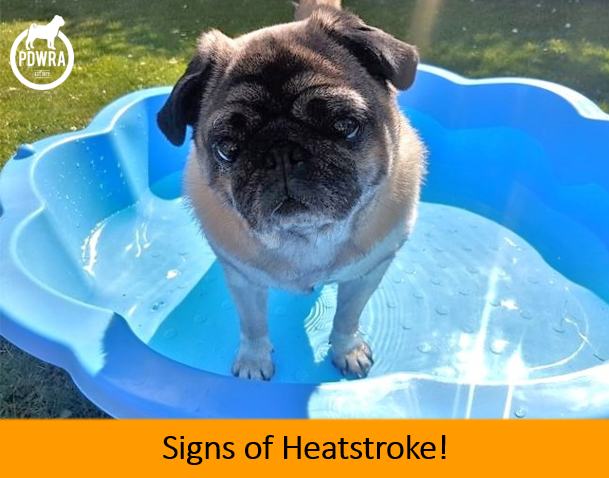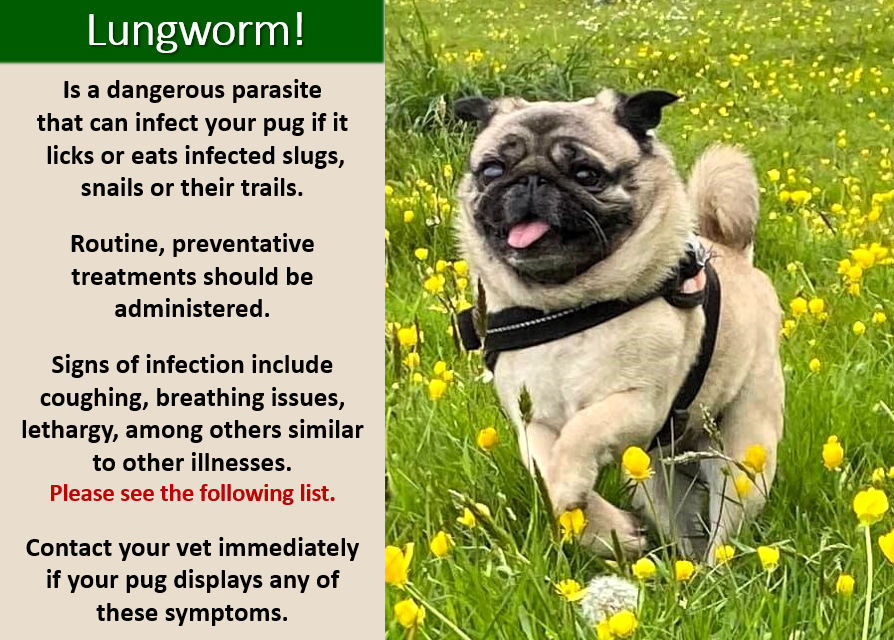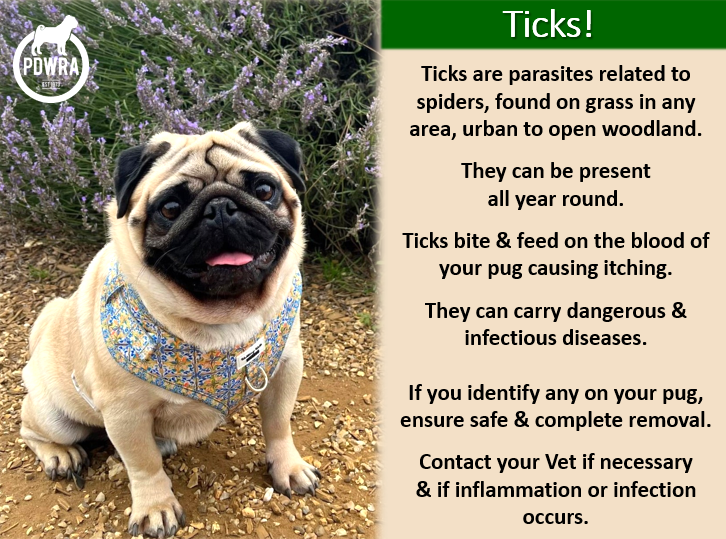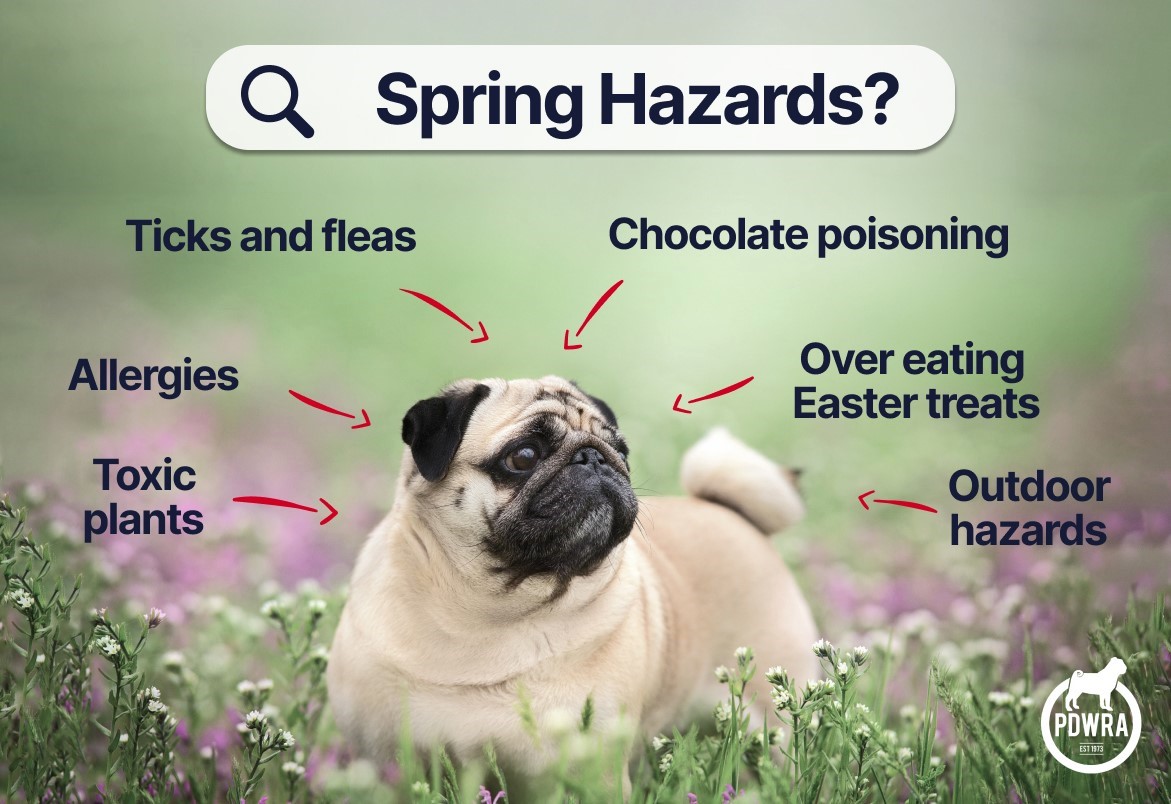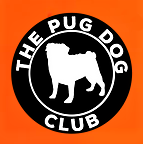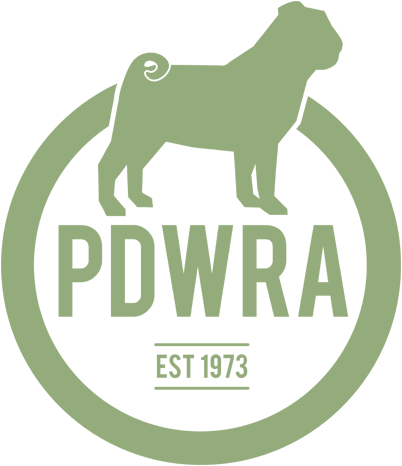Temptation will be indoors and out, so please be vigilant and know what to avoid, or to prepare for, to enjoy the various times of the year, safely:
SUMMERTIME & HOT WEATHER.
As the temperature rises, it’s never too soon to be considering all the advice, tips and preparation for keeping your pugs, so sensitive to heat, cool, comfortable, and safe, during the summer months ahead!
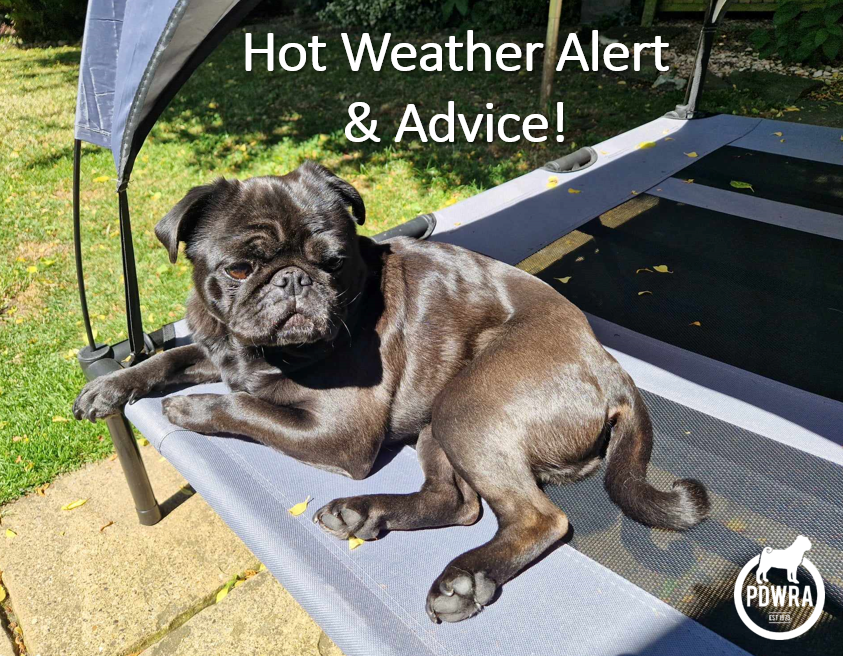
- Make sure your pug has constant access to fresh water – day and night.
- fresh fruit, chilled or frozen, make ideal refreshing & healthy treats to help keep them hydrated.
- Make sure your pug has constant access to shade and cool surfaces.
- Remember to move sources of shade as the sun moves around gardens.
- Provide cooling jackets and shallow paddling pools to enable your pug to cool down, and remember that carpets do not help pugs cool down, so provide cooling mats to help your pug cool down indoors and swap them for a spare cool mat regularly to ensure they are cool.
- DO NOT rely on fans alone to cool your pugs down as they are not as effective on pets as they are on us.
- Plan your walks
- Walk your pug in the early morning or late in the evening if the temperatures are cool enough and try to stick to shaded areas.
- If the mornings/evenings are still warm – DO NOT walk your pug!
- Particularly if they are overweight, have health issues, are elderly or very young.

- The Seven Second Test
- Tarmac can get very hot in the sun – hold your hand against the tarmac for 7 seconds. If it’s too hot for your hand DO NOT walk your pug as they could burn their paws.
- Tarmac can get very hot in the sun – hold your hand against the tarmac for 7 seconds. If it’s too hot for your hand DO NOT walk your pug as they could burn their paws.

NEVER leave your pug in a car on a hot day – even if it’s just for a couple of minutes, or even if you have left the windows open. Pugs can die in hot cars in minutes!!!
HEATSTROKE.
This is an extremely dangerous condition that can develop if a dog gets too hot. Pugs are particularly sensitive to over-heating which can be extremely dangerous for them, with limited ability to sweat and little or no nose/muzzle they will struggle to lose heat through panting alone, more-so if they are overweight or have other health problems. Very old and very young dogs are most at risk.
Normal body temperature for a dog tends to be between 38-39°C (100.4-102.2°F), this can rise a bit if they are unwell with a fever.
Heat exhaustion typically occurs when a dog’s body temperature rises above 39.4°C then they are at risk of heatstroke, which can cause seizures, organ damage, internal bleeding, coma and be critical for them.
Nearly three quarters of heatstroke cases develop while playing and exercising though it can also be caused by simply sitting somewhere too warm, or being trapped somewhere hot, such as a car, conservatory or room without proper ventilation.
Therefore, it is important to know what to look for, where HEATSTROKE is concerned. Signs can include:
-
-
- Excessive panting
- Difficulty breathing (fast, heavy, noisy)
- Increased heart rate
- Drooling / Foaming at the mouth
- Diarrhoea (may be bloody)
- Vomiting
- Weakness / Collapse
- Stupor / confusion
- Drowsy & uncoordinated
- Lethargy (low energy)
- Shaking
- Seizures
- Unconsciousness
-
If your pug experiences any of these symptoms, please seek the advice of your Vet immediately.
Heatstroke is more dangerous the longer it lasts, so the quicker your pug is cooled down and treated by a vet, the better their chance of a full recovery.
In an EMERGENCY:
1) Immediately move your pug to a cooler area, a cool, darkened room or into the shade
2) Cool them down straight away
- Calmly and quickly use cold water (water from the cold tap is fine) over their whole body, or use wet cloths or towels
- Be extremely careful they don’t inhale any water by keeping it away from their nose and mouth
- Offer them a drink of cold water but don’t force them to drink if they don’t want to. Wet their tongue with water instead.
- Create a breeze by opening doors and windows or turning a fan/air-conditioning on
- Put them on top of a cold wet towel.
- Don’t cover them with a wet towel or cuddle them as this will make them even hotter
3) Go to your Vet as soon as possible
- Transport them in an air-conditioned car or with the windows open (ensuring they can’t get out)
- If possible take someone with you to keep cooling them down while you travel
For more advice about heatstroke including first-aid, please see:
https://www.pdsa.org.uk/pet-help-and-advice/pet-health-hub/conditions/heatstroke-in-dogs
LUNGWORM.
In warm wet weather, slugs and snails are more active, which increases the risk of them passing on the lungworm parasite to our pugs.
If you spot slugs and snails be extra vigilant when out walking your dog and always pick up and safely dispose of your dog’s faeces.
Signs of lungworm infection include:
- Breathing difficulties
- Coughing (especially bringing up blood)
- Lethargy
- Poor blood clotting/persistent bleeding
- General sickness
- Circling
- Vomiting
- Diarrhoea
- Stomach and back pain
- Poor appetite
- Weight loss
- Seizures
- Behaviour changes (depression)
Consult your vet as soon as possible if your dog becomes unwell. Remember, not every snail or slug carries the disease and lungworm’s geographical limitations means infection is relatively uncommon, but when it does appear, it is potentially extremely serious, often a chronic disease, lasting months, even years.
Killing lungworm is relatively simple, ensuring your routine (monthly), preventative anti-parasite treatments administered to your pug are appropriate.
Once diagnosed and treated, most dogs make a full recovery and, like all diseases, the key to successful treatment is taking action early.
For more information about lungworm & its treatment, please see:
https://www.pdsa.org.uk/pet-help-and-advice/pet-health-hub/conditions/lungworm-in-dogs
TICKS.
Ticks are another potential hazard, being present ALL YEAR ROUND not just during warm-weather. If you’re walking your dog or holidaying in new, particularly grassy areas, you may want to be extra vigilant regarding these parasites.
SPRING.
Though behind us officially, there are some of the usual Springtime suspects still around, for example grass/tree pollen, to be mindful of:
Spring is here, at last! | The Pug Dog Welfare & Rescue Association (pugwelfare-rescue.org.uk)
Many different plants commonly found in the home, gardens and outdoor areas can make your dog ill. Some of these are highly poisonous, while others may only cause a mild tummy upset.
Incidents of poisoning from spring bulbs are most likely to occur from dogs eating the bulbs in spring when they begin to flower and autumn when they are planted.
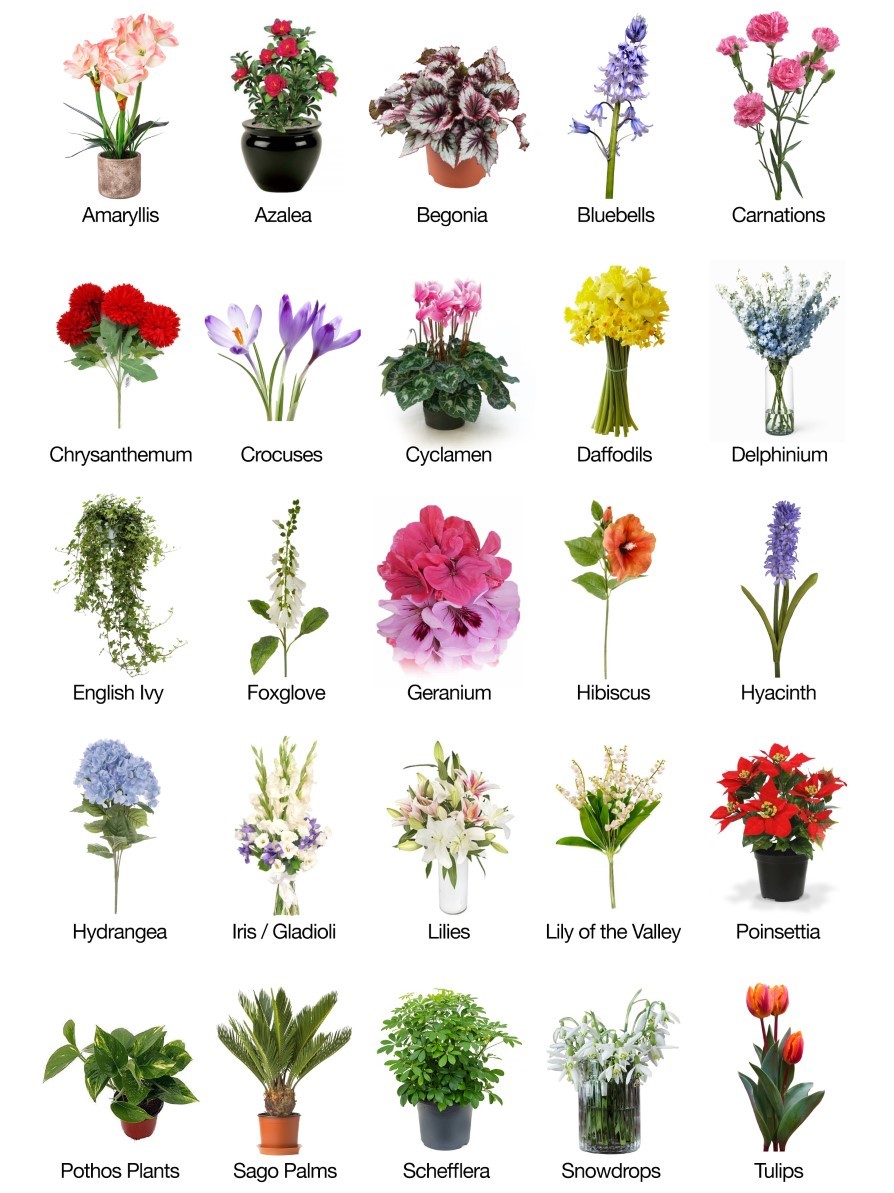
If you suspect your dog might have ingested anything that is appearing to make them ill, contact your Vet immediately.
For more information, please see: Poisons | Dog health | The Kennel Club
Plus a comprehensive list of poisonous plants at: Poisons in your garden | Dog health | Kennel Club (thekennelclub.org.uk)
Other pug health articles can be found at:


